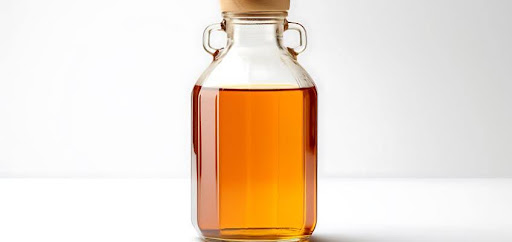
The Sweetest Mead: Indulge in Honey’s Finest
Finding the perfect sweet mead can often feel like searching for a needle in a haystack. Mead, an ancient drink made from honey, water, and yeast, varies widely in sweetness and flavor.
This article will guide you through understanding what makes some meads sweeter than others and introduce you to some of the best bottles to try. Get ready to explore delicious options!
Key Takeaways
- Honey types like wildflower, clover, and orange blossom play a big role in the sweetness and flavor of mead. Wildflower honey adds complex flavors for a nuanced sweetness, while clover is milder and smoother.
- The back sweetening process allows brewers to adjust the sweetness of mead after fermentation by adding more honey or sugar. This step enhances the mead’s flavor profile without disrupting yeast activity.
- There are many sweet meads to try that offer different tastes and aromas. Butter Bee Mead is known for its rich sweetness, Chaucer’s Mead has a balanced taste, Spiced Mead introduces warming spices into the mix, Pure Honey Mead focuses on showcasing honey’s natural flavors, and Orange Ginger Mead combines citrusy notes with ginger’s warmth.
- Adjusting the sweetness levels in your mead can be done through various methods such as adding more honey or non-fermentable sugars after fermentation. Experimentation with small batches helps find the perfect balance suited to personal taste preferences.
- Aging mead in oak barrels adds complexity to its flavor by introducing elements like vanilla and caramel from the wood. This aging process also softens harsh tannins for a smoother drinking experience.
What is Mead?
Mead is an ancient alcoholic beverage made by fermenting a mixture of honey, water, and yeast. It can be crafted into a variety of styles, including traditional mead as well as flavored variations such as spiced mead or orange ginger mead.
Basic ingredients (honey, water, yeast)
Crafting the sweetest mead starts with just three simple ingredients: honey, water, and yeast. The quality of honey is pivotal; it’s the backbone that imparts unique flavors ranging from bold citrus notes to subtle floral hints.
This primary ingredient, combined with water, creates a base for the yeast to thrive in. Yeast plays a crucial role as it converts the sugars in honey into alcohol through fermentation, giving life to traditional mead or more adventurous varieties like WILD CHOKECHERRY MEAD and HUCKLEBERRY MEAD.
In mead making, simplicity meets complexity.
As these basic components mix and ferment, they lay down the canvas for creativity. By adjusting ratios or adding additional elements like spices or fruit – think Apple Mead or Orange Ginger Mead – artisans can craft an array of flavors from dry mead to those mirroring the sweetness levels found in ice wine.
This process demonstrates how from straightforward beginnings emerge great meads with diverse aromas and taste experiences that captivate both new enthusiasts and seasoned aficionados alike.
Varieties of mead (traditional, flavored, etc.)
Mead comes in a dazzling array of varieties, offering something for every palate. Traditional mead keeps it simple with honey, water, and yeast, letting the purity and quality of the honey shine through.
This classic drink has stood the test of time, appealing to those who appreciate history and simplicity in their glass. On the other hand, flavored meads introduce additional ingredients like fruits, spices, or even herbs into the mix.
These range from Fruit Mead Variety Pack options that capture the essence of nature’s bounty to specialized concoctions like Maple Mead or Plum Basket blends that offer unique tastes.
The addition of these flavors creates a more complex beverage that can complement various foods or be enjoyed on its own.
Experimentation doesn’t stop there; some brewers push boundaries further by introducing modern twists to ancient recipes. For those with adventurous taste buds, there’s Pure Honey Mead that focuses on showcasing different types of honey’s nuanced flavors or Spiced Mead that warms you up with its rich spices blend.
Each variety offers a different way to explore this ancient beverage’s versatility while respecting its rich heritage. Whether you lean towards traditional simplicity or flavor-packed innovations, there’s a mead out there waiting for your discovery.
What Makes a Mead Sweet?
Honey types and sweetness levels determine the sweetness of mead. The back sweetening process also plays a crucial role in achieving the desired level of sweetness in mead.
Honey types and sweetness levels
Different honey types play a crucial role in the sweetness and flavor of mead. Wildflower honey, for example, brings a complex bouquet of flavors to the mead, often resulting in a more nuanced sweetness.
In contrast, clover honey is lighter and tends to produce a milder, smoother sweet mead. Orange blossom honey adds a citrusy note that can brighten the overall taste profile. The level of sweetness in the final product also depends on how much sugar from the honey remains unfermented; more residual sugar means a sweeter mead.
Selecting the right type of honey sets the foundation for crafting best-in-class sweet meads that delight with every sip. This choice influences not only initial taste but also how well different flavor notes are expressed in each batch.
Now let’s explore how back sweetening can further adjust this delicate balance between sweet and flavorful.
Back sweetening process
To achieve a sweeter taste in mead, the back sweetening process involves adding more honey or sugar to the fermented mead. This is done after fermentation is complete to avoid disrupting the yeast activity.
The additional sweetness enhances the flavor profile and brings out the natural honey notes in the mead.
It’s important to note that back sweetening can be achieved using different types of honey, each with its own unique sweetness level, allowing for a tailored approach towards creating the desired sweetness in the mead.
This process requires careful consideration and control to bring out the best flavors without over-sweetening and impacting overall balance.
Best Sweet Meads to Try
Indulge in a selection of the finest sweet meads, each offering unique flavors and aromas to tantalize your taste buds. Explore an array of options from Butter Bee Mead’s rich sweetness to the zesty notes found in Orange Ginger Mead.
Butter Bee Mead
Butter Bee Mead is a delectable sweet mead that offers a unique and enjoyable flavor profile. Crafted with the finest honey, water, and yeast, this traditional mead variety stands out for its rich sweetness and smooth texture.
The distinct sweetness of Butter Bee Mead makes it an excellent choice for those seeking the best meads to indulge in. Whether as a standalone beverage or paired with complementary foods, Butter Bee Mead promises a delightful experience that beer enthusiasts will appreciate.
Gift boxes featuring Butter Bee Mead make perfect gifts for any occasion.
Chaucer’s Mead
Transitioning from the delicate sweetness of Butter Bee Mead to the rich flavors of Chaucer’s Mead, this variety is a must-try for mead enthusiasts. Crafted with an expert blend of honey, water, and yeast, Chaucer’s Mead is known for its balanced sweetness and smooth finish.
This traditional sweet mead offers a delightful flavor profile that pairs perfectly with a range of cuisines. The timeless appeal of Chaucer’s Mead makes it a beloved choice for those seeking depth and character in their meads.
Spiced Mead
Spiced mead is an enticing variation that infuses the classic honey-based beverage with a tantalizing array of spices. Typically, warming spices like cinnamon, cloves, and nutmeg are added during the brewing process to create a rich and aromatic flavor profile.
The result is a sweet yet complex mead with subtle hints of spice, making it an excellent choice for those seeking a unique and flavorful experience.
Crafting spiced mead requires a delicate balance of flavors to achieve the perfect blend of sweetness and spice. The careful infusion of these warm spices into the honey and water mixture creates a harmonious concoction that appeals to both traditional mead enthusiasts and those looking for something new.
Whether enjoyed on its own or paired with savory dishes or desserts, spiced mead offers an exceptional sensory journey for those who appreciate diverse taste experiences.
Pure Honey Mead
Transitioning from the complexities of various mead flavors to the realm of pure honey mead, this traditional variety underpins the essence of simplicity and sweetness. Crafted solely with water, yeast, and rich honey, its ever-changing taste is tailored towards those seeking more than just a beverage.
The natural sweetness of this meticulously brewed drink is not only designed to enhance your palate but also unlock the secrets of an age-old recipe.
Orange Ginger Mead
Transitioning from the classic sweetness of Pure Honey Mead to a burst of citrus and spice, Orange Ginger Mead is an enticing variety that brings together the zesty tang of oranges with the warming kick of ginger.
The combination creates a mead that is both refreshingly sweet and subtly spicy, making it a popular choice for those who prefer their mead with a hint of complexity. The natural sweetness from the honey intermingles with the bright acidity of oranges and the aromatic heat from ginger, resulting in a well-balanced flavor profile that appeals to both sweet mead enthusiasts and those seeking more adventurous flavors.
Crafted meticulously by expert mead makers, Orange Ginger Mead is designed to enhance your palate with its unique blend of flavors.
Expert Tips for Making Sweet Mead
Enhance your sweet mead expertise by choosing the perfect honey, controlling fermentation, adjusting sweetness levels, and learning about food pairings. Master the art of sweet mead making with expert tips on selecting honey and aging in oak barrels.
Choosing the right honey
To achieve the perfect sweetness in your mead, start by choosing the right honey. Opt for floral varieties like orange blossom or clover for a milder sweet flavor or go for stronger-tasting honeys such as buckwheat or wildflower to add depth and character to your brew.
Consider the intensity of the honey’s flavors – lighter ones may be overwhelmed during fermentation, so adjust accordingly.
For a unique twist, experiment with varietal honeys such as avocado, blueberry, or raspberry which offer distinct flavors that can elevate your mead. Additionally, consider the texture and color of the honey as these characteristics can also impact the final profile of your mead.
Controlling fermentation
Controlling fermentation is crucial in sweet mead production. Yeast activity needs to be monitored carefully to achieve the desired sweetness level. Regulating temperature during fermentation is essential for preserving the honey’s natural sugars and preventing yeast from fermenting them into alcohol completely.
This process ensures a smoother, sweeter taste in the finished product.
Maintaining control over fermentation also involves adjusting sugar levels as needed. This can be achieved by halting fermentation at a specific gravity or by adding more honey after primary fermentation ends.
By carefully managing these factors, brewers can create a well-balanced and deliciously sweet mead that will delight any palate.
Ready to discover how to adjust sweetness levels? Keep reading our expert tips for making sweet mead.
Adjusting sweetness levels
Adjusting sweetness levels in mead is a crucial step to achieve the perfect balance of flavors. This can be done by adding more honey to increase the sweetness, or diluting with water to reduce it.
Another method is using non-fermentable sugars like lactose or artificial sweeteners after fermentation. It’s all about finding the right level that suits your taste preferences and complements the other flavors in your mead.
To refine the sweetness, experimenting with small batches is recommended as you can carefully adjust and monitor the impact on flavor without risking an entire batch. This process allows for customization based on personal preference, ensuring a delightful end product tailored to individual tastes.
Ageing in oak barrels
Mead can benefit from ageing in oak barrels, as the wood imparts flavors like vanilla, caramel, and spice. This process also allows for micro-oxygenation, which softens harsh tannins and melds flavors.
The result is a well-rounded mead with enhanced complexity that pairs beautifully with hearty dishes and rich cheeses.
Moving on to “Best food pairings for sweet mead”…
Best food pairings for sweet mead
Pair sweet mead with a variety of cheeses such as creamy brie, tangy blue cheese, and sharp cheddar. The sweetness of the mead contrasts beautifully with the saltiness and richness of the cheese.
Additionally, indulge in desserts like fruit tarts, apple pie, or honey drizzled pastries to elevate the sweet flavors of mead.
For a savory pairing, opt for roasted meats like glazed ham or barbecue pork ribs. The sweetness of the mead complements the caramelization and smokiness from these dishes. For lighter fare, consider serving sweet mead alongside spicy Asian dishes like Thai coconut curry or Korean BBQ for an exciting fusion experience that brings out contrasting flavors in both food and drink.
Conclusion
Embark on the journey of sweet mead creation by understanding the key elements defining its sweetness. Tailor your mead to perfection by choosing the right honey and mastering back sweetening techniques.
Don’t forget to explore food pairings that will enhance your enjoyment of this delectable beverage. Craft your own signature sweet mead with expert tips and let your creativity flow in this ever-evolving realm of mead-making.
FAQs
1. What is mead?
Mead is an alcoholic drink made by fermenting honey with water.
2. Why is some mead sweeter than others?
Some mead is sweeter because it has more honey added during the fermentation process.
3. Can I make sweet mead at home?
Yes, you can make sweet mead at home by following a recipe and using honey, water, and yeast.
4. How long does it take to make sweet mead?
It takes about a few weeks to several months to make sweet mead, depending on the recipe and fermentation time.
5. Where can I buy sweetest mead?
You can buy the sweetest mead at liquor stores, specialty food shops, or online from craft beverage producers.

Exploring the Mystical Brew: Mead in Norse Mythology
Mead Tasting 101: What You Need to Know About Honey Wine



